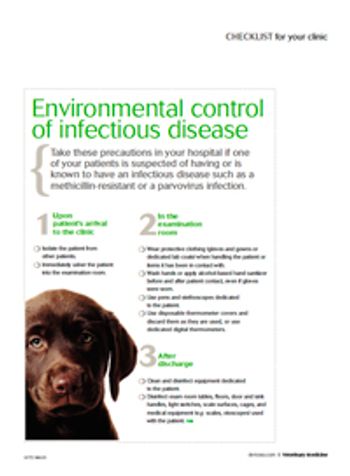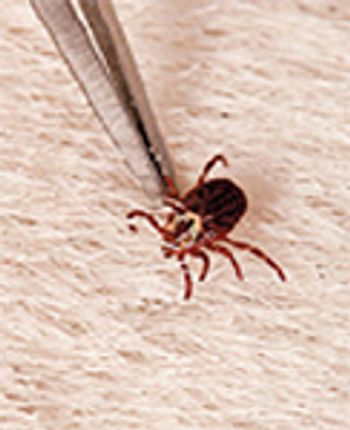
Novartis parasiticide has been out of production since December 2011.

Novartis parasiticide has been out of production since December 2011.

New status expected to be adopted at animal health assembly in May.

Vaccination recommendations can be confusing to pet owners. This toolkit delivers team training, free client handouts, exam room education strategies and more, all designed to make it as easy as possible for veterinarians and their teams to explain vaccinations to pet owners. (With an educational grant provided by Zoetis)

Cost analysis of the five most common preventive pet conditions in 2012 revealed.

Check off these precautions when handling patients with an infectious disease.

Has one of these resistant infections invaded one of your patients? What should you do now to eliminate the infection? Read on...

The second sentence in the last paragraph should have read: "So even if its test results are negative a patient..."

Mizzou veterinarian sees large spike in bacterial infection.

Infection first reported at King Ranch, legendary for its world-class quarter horses.

A look at how to best halt these infections in shelters.

Will current point-of-care tests detect this new variant-CPV2c?

Virus widely circulates in U.S. swine throughout agricultural fair season.

USDA grants conditional license for vaccine that can be developed on U.S. mainland.

Frankfort, Ky. -- Warm, wet weather in Kentucky over the last few weeks means conditions are ripe for an outbreak of West Nile virus (WNV), and equine owners are being warned to vaccine their horses against the disease.

Thirty-two dogs, at least one cat and a number of livestock all have been euthanized near Carlsbad, N.M. following exposure to rabies.

With more cats now exposed to this tick-borne disease, a new treatment option is timely.

Schaumburg, Ill. - The American Veterinary Medical Association is rebutting claims made by multiple media outlets that an increase in distemper cases at shelters are due to new virus strains.

A look at the rabies vaccination rates in Texas before and after triennial vaccination was allowed.

Help uncover the cause of Max's lethargy, weight loss, and rapid breathing.

Geneva, Switzerland -- It would be better to delay publishing recently contested studies on mutated H5N1 viruses than to publish partial papers in order to address bioterrorism concerns, according to an expert group recently convened by the World Health Organization (WHO).

Fort Collins, Colo. -- A Colorado State University (CSU) study will look at how equine herpesvirus type 1 (EHV-1) may compromise the immune system immediately upon entering the ?gate? of a horse?s respiratory system.

Raleigh, N.C. -- North Carolina confirmed the state?s first-ever case of the neurologic form of equine herpesvirus (EHV-1) Jan. 5.

Veterinarians in Ohio were asked to remain vigilant about administering rabies vaccinations and take precautions against exposure.

A veterinarian and virologist at the University of Wisconsin-Madison veterinary school is at the center of a controversy regarding censorship on a study about avian influenza viruses.

ALBANY, N.Y. - New York now requires animals that have been exposed to rabies to go through a 10-day confinement and observation period in a secured facility, like a veterinarian's office.